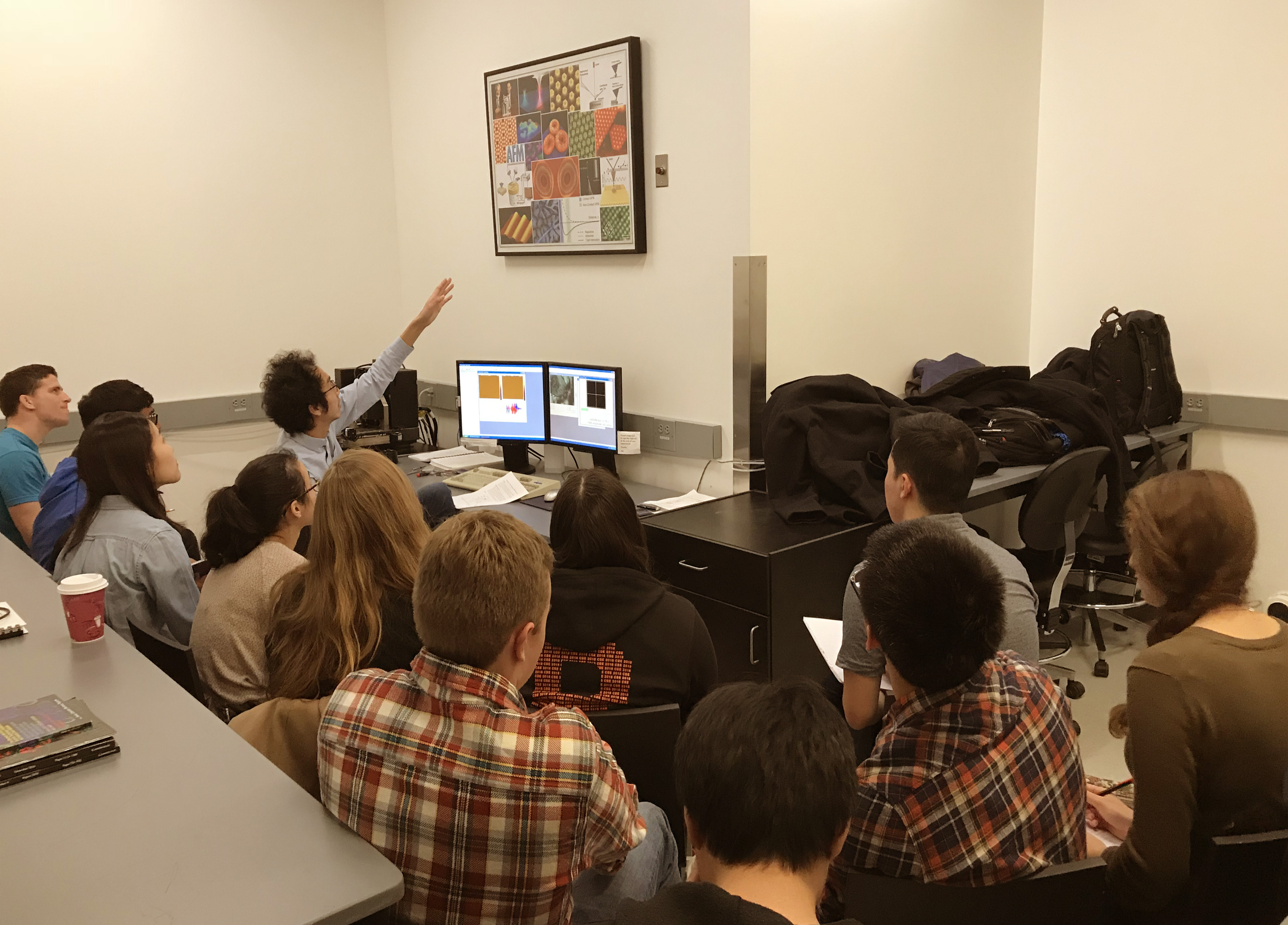Training
Announcing a new short course series in utilizing the advanced instrumentation and expertise available in the Imaging and Analysis Center

Safety is a top priority at Princeton University. Please take time to review the Environmental Health and Safety website.
| To use IAC equipment and sign up for training courses... Register an email address here |
| Need assistance with IAC equipment? Click here! |
| Check out our current Instrument Rates |
| All training courses will begin outside ACEE 032. |
Basic sample preparation for microscopy
Basic operation of various imaging and analysis instruments
Advanced operation of various imaging and analysis instruments
1. Attendants are required to have previous training and practice in use of the XL30 SEM (2b).
2. Attendants are required to have previous training and practice in use of the Rigaku Miniflex XRD (2a).
3. Attendants are required to have previous training and practice in use of the Quanta 200 FE-ESEM (3b).
4. Attendants are required to have previous training and practice in use of the Verios 460 XHR SEM (3c).
5. Attendants are required to have previous training and practice in use of the Bruker Multimode AFM (2d).
6. Attendants are required to have previous training and practice in use of the CM 200 TEM (2c).
7. Attendants are required to have previous training and practice in use of the Talos F200X S/TEM (3j).
8. Attendants are required to have previous training and practice in use of the Anton Paar MCR501 (2k)..
* courses coming soon